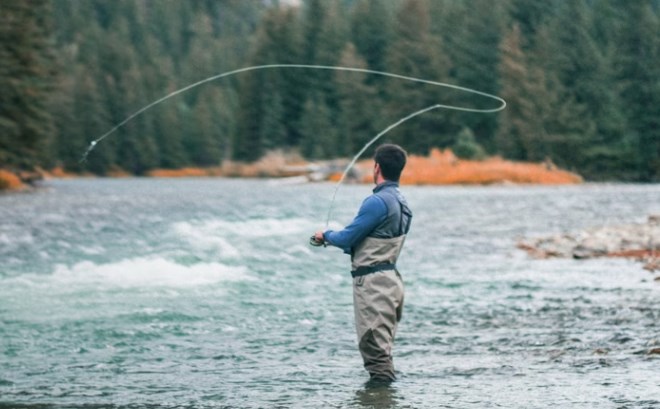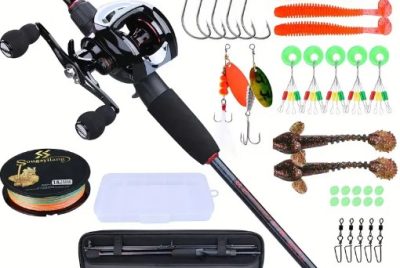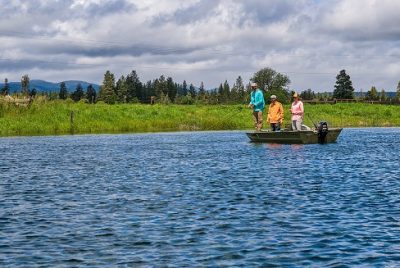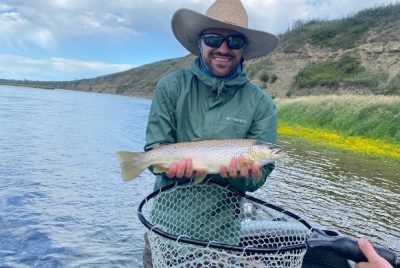Big Sky Fly Fishing
Introduction
Have you ever dreamed of casting your line against the backdrop of majestic mountains and clear blue skies? Welcome to Big Sky fly fishing. This isn’t just any fishing experience; it’s an adventure that combines the serenity of nature with the thrill of the catch. In this guide, I’ll share why Big Sky is a fly fishing paradise, what gear you need, the best spots to fish, and tips to make your trip unforgettable. Let’s dive into the world of Big Sky fly fishing!
What Makes Big Sky Fly Fishing Unique?
The Scenic Beauty of Big Sky

Big Sky, Montana, offers some of the most breathtaking landscapes you’ll ever see. Picture yourself surrounded by towering mountains, lush forests, and pristine waters. The scenery alone is worth the trip. But there’s more to it than just the views.
Diverse Fishing Locations
Rivers and Streams
Big Sky is home to a variety of rivers and streams, each offering a unique fishing experience. The flowing waters are teeming with life, making it a perfect spot for fly fishing enthusiasts.
Lakes and Ponds
If you prefer still waters, Big Sky’s lakes and ponds are perfect. These locations provide a tranquil setting where you can relax and enjoy the quiet as you wait for the fish to bite.
Abundance of Fish Species
From rainbow trout to brown trout and even brook trout, the waters of Big Sky are rich with diverse fish species. Each type of fish offers its own challenge, making every fishing trip a new adventure.
Essential Gear for Fly Fishing in Big Sky
Rods and Reels
A good fly fishing rod and reel are essential. Depending on the type of fish you’re targeting, you might need different sizes. In general, a medium-weight rod is versatile enough for most situations in Big Sky.
Flies and Tackle
Choosing the right flies is crucial. Local fly shops can provide you with the best options based on the current hatch and the fish you’re targeting. Make sure to carry a variety of flies to adapt to changing conditions.
Waders and Boots
Comfortable and durable waders and boots will keep you dry and comfortable as you wade through the waters. Opt for breathable materials, especially if you’re fishing during the warmer months.
Additional Accessories
Don’t forget your vest, net, and polarized sunglasses. These accessories make a big difference in your fishing experience, keeping you organized and enhancing your ability to spot fish.
Top Fly Fishing Spots in Big Sky
Gallatin River

The Gallatin River is a must-visit. Known for its scenic beauty and abundant fish, it offers plenty of spots for both beginners and experienced anglers. Its fast-moving waters are perfect for a thrilling fly fishing experience.
Madison River
Another top spot is the Madison River. It’s famous for its large trout and picturesque surroundings. Whether you’re wading or floating, the Madison provides excellent fishing opportunities.
Yellowstone River
The Yellowstone River is the longest undammed river in the contiguous United States. Its diverse habitats make it an angler’s paradise. Here, you’ll find a mix of trout species, all ready to challenge your skills.
Local Lakes and Ponds
Don’t overlook the local lakes and ponds. They offer peaceful settings and are often less crowded. These spots are perfect for a quiet day of fishing with plenty of chances to catch big fish.
Best Times of Year for Fly Fishing in Big Sky
Spring
Spring brings the start of the fishing season. As the snow melts, rivers swell, and the fish become more active. This is a great time to target trout as they come out of their winter hiding spots.
Summer
Summer is peak fishing season in Big Sky. The weather is warm, and the waters are teeming with fish. It’s also the time when the most insect hatches occur, providing ample food for the fish and great opportunities for anglers.
Fall
Fall offers cooler temperatures and fewer crowds. The changing leaves create a stunning backdrop, and the fish are feeding heavily in preparation for winter. It’s a perfect time for a peaceful fishing trip.
Winter
Winter fly fishing is for the adventurous. While challenging, it can be incredibly rewarding. With fewer anglers around, you’ll have the waters almost to yourself. Make sure to dress warmly and be prepared for icy conditions.
Techniques and Tips for Success
Reading the Water

Understanding where fish are likely to be hiding is crucial. Look for areas where fast water meets slow water, undercut banks, and deep pools. These spots often hold the most fish.
Matching the Hatch
Pay attention to what insects are present on the water. Matching your flies to the local hatch can significantly increase your chances of success. Local fly shops can provide valuable insights into the current hatches.
Casting Techniques
Practice your casting before hitting the water. A good cast can make all the difference. Focus on smooth, controlled movements to place your fly accurately and avoid spooking the fish.
Playing and Landing Fish
Once you’ve hooked a fish, the real challenge begins. Keep your rod tip up and maintain tension on the line. Use the reel to manage the fish’s runs and be patient. A gentle hand will help you land your catch successfully.
Hiring a Guide vs. Going Solo
Benefits of Hiring a Guide
A local guide can provide invaluable knowledge of the area, including the best spots and techniques. They can also help improve your skills and ensure you have a successful trip.
Advantages of Fishing Solo
Fishing solo offers freedom and solitude. You can explore at your own pace and enjoy the peace and quiet of nature. It’s also a great way to challenge yourself and develop your skills.
Making the Right Choice
Decide based on your experience level and personal preferences. If you’re new to the area or fly fishing, a guide can be a great asset. Experienced anglers might prefer the adventure of going solo.
Conservation and Respect for Nature
Catch and Release Practices

Practicing catch and release helps preserve fish populations. Use barbless hooks, handle fish gently, and release them quickly to ensure they survive.
Leave No Trace Principles
Respect the environment by following Leave No Trace principles. Pack out all trash, stay on designated paths, and minimize your impact on the natural surroundings.
Supporting Local Conservation Efforts
Get involved in local conservation efforts. Whether it’s through volunteering or donations, supporting these initiatives helps protect the natural beauty and health of Big Sky’s waters.
Personal Tips for an Enjoyable Trip
Packing Essentials
Bring all the essentials, including a first aid kit, sunscreen, and plenty of water. Having the right gear can make or break your trip.
Staying Safe on the Water
Safety should always come first. Wear a life jacket, be aware of weather conditions, and let someone know your plans. It’s better to be safe than sorry.
Enjoying the Experience
Remember to take a moment to appreciate the beauty around you. Fishing is as much about enjoying nature as it is about catching fish. Relax, have fun, and make memories.
Common Mistakes to Avoid
Overpacking Gear
Bringing too much gear can be cumbersome. Stick to the essentials to keep your load light and manageable.
Ignoring Weather Conditions
Always check the weather forecast before heading out. Sudden changes can be dangerous, so be prepared and flexible with your plans.
Disregarding Local Regulations

Follow all local fishing regulations, including licensing and catch limits. This ensures sustainable fishing practices and helps protect fish populations.
Conclusion
Big Sky fly fishing is an experience like no other. From the stunning scenery to the thrill of the catch, it offers something for everyone. Whether you’re a seasoned angler or a beginner, there’s always something new to learn and enjoy. So pack your gear, head to Big Sky, and immerse yourself in the adventure of a lifetime. Happy fishing!
FAQs
1. Do I need a special license to fly fish in Big Sky?
Yes, you need a Montana fishing license to fly fish in Big Sky. You can purchase it online or at local shops.
2. What is the best time of day to fly fish in Big Sky?
Early morning and late afternoon are typically the best times, as fish are more active during these cooler parts of the day.
Can beginners enjoy fly fishing in Big Sky?
Absolutely! There are plenty of spots suitable for beginners, and hiring a guide can provide valuable instruction.
3. Are there fly fishing schools or classes in Big Sky?
Yes, there are several local outfitters that offer classes and guided trips for all skill levels.
4. How do I find a good local guide?
Check online reviews, ask for recommendations at local fly shops, and look for guides with good credentials and experience in the area.




